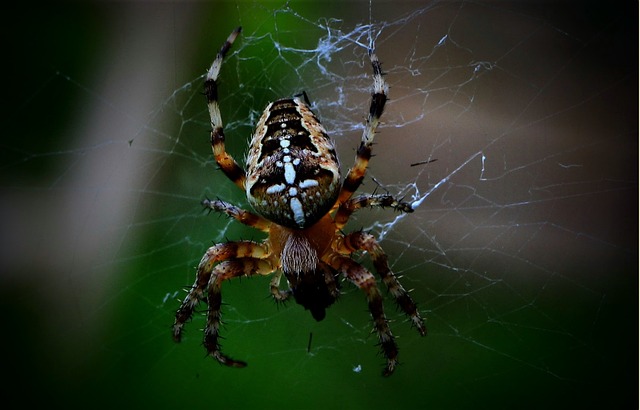Stinging pests like bees, hornets, and wasps pose significant risks due to their painful stings and potential allergic reactions. Professional stinging pest control services, including wasp removal, bee management, and hornet control, are crucial for both residential and commercial spaces to ensure safe and thorough removal using advanced technologies. These services are vital throughout the seasonal activity periods, managing colonies and preventing property damage and negative impacts on health and property value.
Stinging pests like wasps, bees, and hornets can pose significant hazards to humans and properties. In this article, we explore advanced technologies revolutionizing stinging pest control, offering safer and more effective solutions than traditional methods. From heat treatment and chemical-free devices to customized residential and commercial services, discover how modern innovations tackle bee and hornet control, ensuring a peaceful coexistence with these insects.
Understanding Stinging Pests and Their Behavior
Stinging pests, including bees, hornets, and wasps, pose a significant threat to both residential and commercial spaces due to their ability to inflict painful stings and potentially trigger severe allergic reactions. Understanding their behavior is crucial in effective pest control services. These insects are highly social and live in organized colonies with distinct roles for each member. They primarily seek nectar and pollen as food sources, making them common in gardens, parks, and urban areas rich in floral diversity.
Professional wasp removal and bee and hornet control require specialized knowledge due to these pests’ intricate social structures and potential aggressiveness. Stinging insect extermination methods must consider the environmental impact and safety of nearby inhabitants. Residential stinging pest services often involve inspecting for nests, treating entry points, and employing protective gear for technicians. Commercial stinging pest removal demands a strategic approach, especially in food service establishments, as these pests can contaminate products and cause public health concerns.
– Identifying common stinging pests (wasps, bees, hornets)
Identifying common stinging pests like wasps, bees, and hornets is the first step in effective stinging pest control services. These insects pose significant risks, from painful stings to potential allergic reactions in sensitive individuals. Wasps are known for their aggressive behavior and nest-building habits, often in attics or walls. Bees, while generally less aggressive, can be dangerous when protecting their hives. Hornets, with their larger size and potent venom, require professional wasp removal due to their formidable stinging abilities.
When it comes to bee and hornet control, as well as stinging insect extermination, engaging the services of experts in residential stinging pest services or commercial stinging pest removal is crucial. Professional exterminators employ advanced technologies, such as heat treatment and targeted pesticides, to ensure thorough and safe removal. These methods are designed to minimize environmental impact while maximizing the effectiveness of stinging insect control, offering peace of mind for both homeowners and business owners.
– Seasonal variations in their activity
Stinging pests like bees and hornets often exhibit seasonal variations in their activity, which can impact how and when control services are needed. During spring and early summer, these insects are at their most active, establishing nests and foraging for food. This period demands heightened vigilance and proactive measures from professional pest control services, especially for commercial properties where large colonies can pose significant risks to public safety.
In contrast, late summer and autumn see a decline in stinging insect activity as they prepare for winter. However, this doesn’t mean residential stinging pest services are no longer crucial. Nests may still be present, and individuals insects can remain active until cold temperatures set in. Professional wasp removal is particularly important at the end of the season to prevent unexpected stings and ensure a safe environment for both residents and workers throughout the colder months.
– Hazards posed by stinging insects to humans and properties
Stinging pests, such as bees, hornets, and wasps, pose significant risks to both humans and properties. These insects can deliver painful stings that, in some cases, may trigger severe allergic reactions, leading to medical emergencies. Beyond the immediate physical hazards, stinging pests also cause extensive damage to structures. They build nests in attics, walls, and other hidden spaces, which can compromise the integrity of buildings over time. Moreover, their presence can negatively impact a property’s value and attract other pests, creating a complex and costly problem for homeowners and commercial properties alike.
Professional stinging pest control services are essential to mitigate these risks effectively. Bee and hornet control specialists employ advanced techniques, including targeted treatments and nest removal, to ensure safety and minimize disruption. For residential areas, regular stinging insect extermination can prevent infestations from becoming hazardous. Similarly, commercial stinging pest removal services are crucial for businesses aiming to maintain a safe environment for employees and customers while protecting their assets from potential damage.
In light of the potential dangers posed by stinging pests, it’s clear that advanced technologies are transforming both residential and commercial stinging pest control services. From targeted laser treatments to innovative trapping systems, these modern solutions offer safer, more effective methods for dealing with wasps, bees, and hornets. For those seeking professional wasp removal or bee and hornet control, the future looks bright, ensuring a reduced risk to humans and properties alike.
